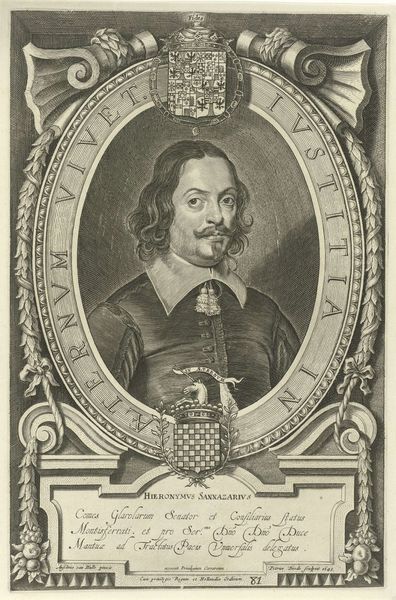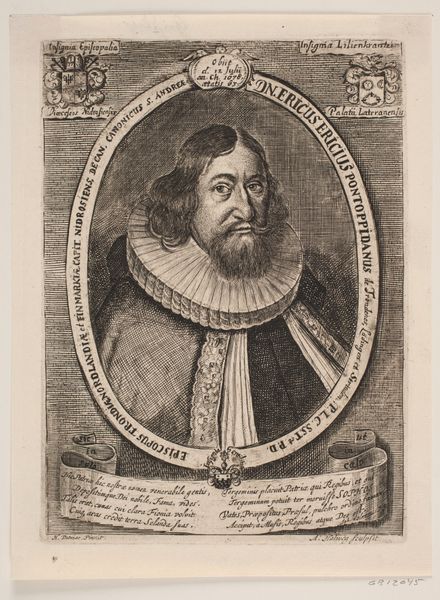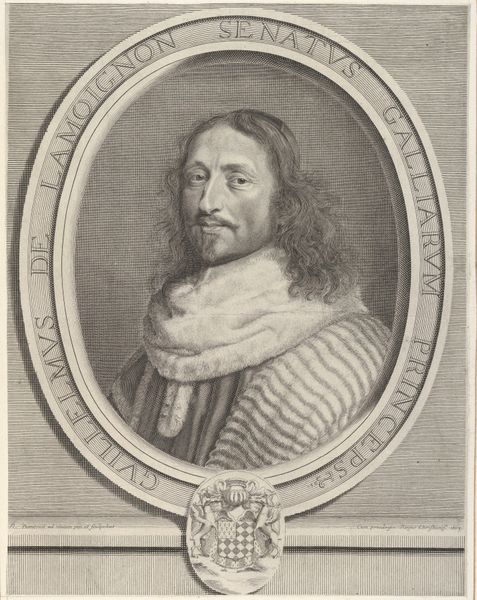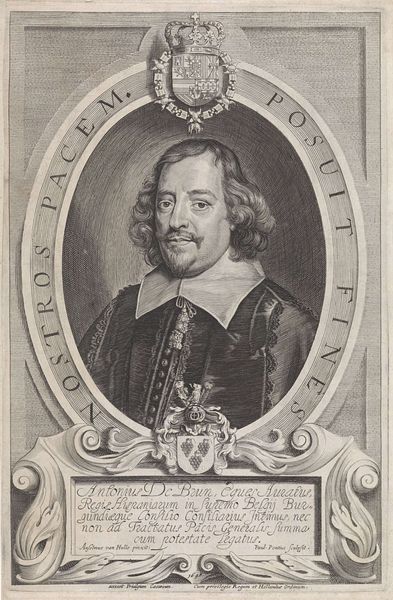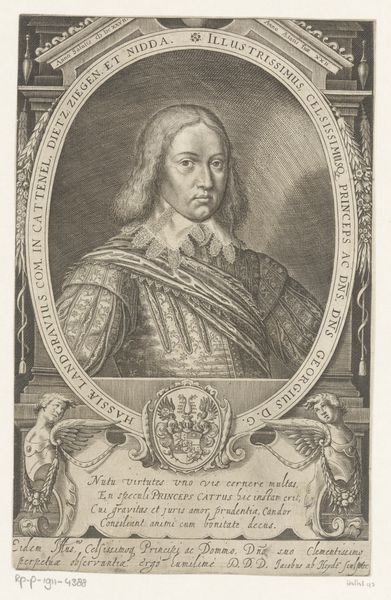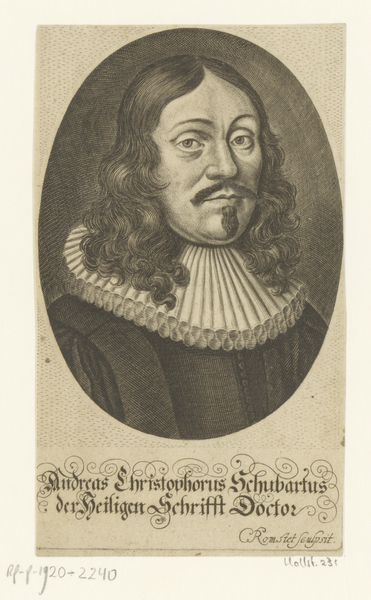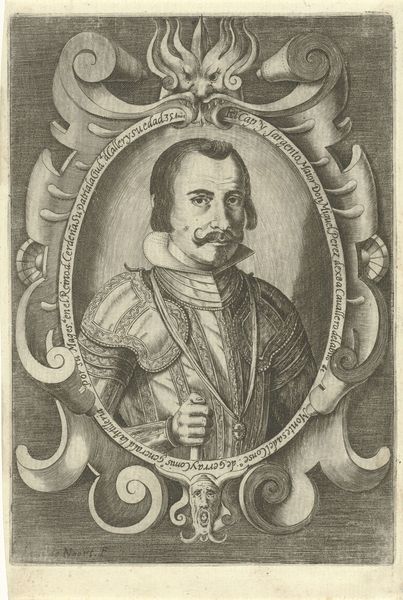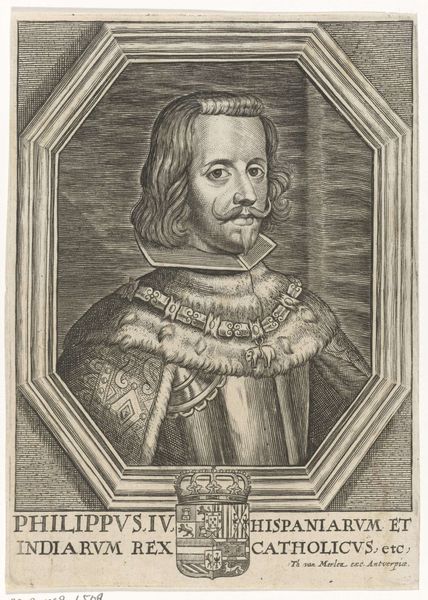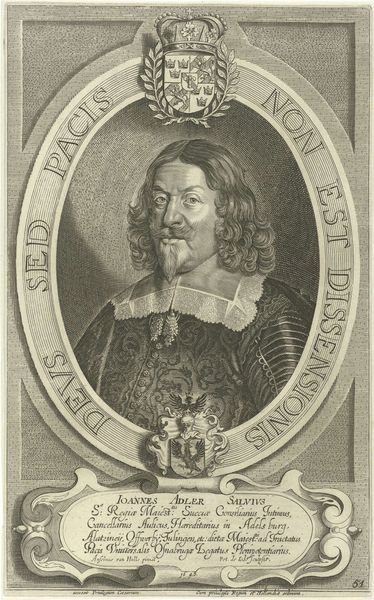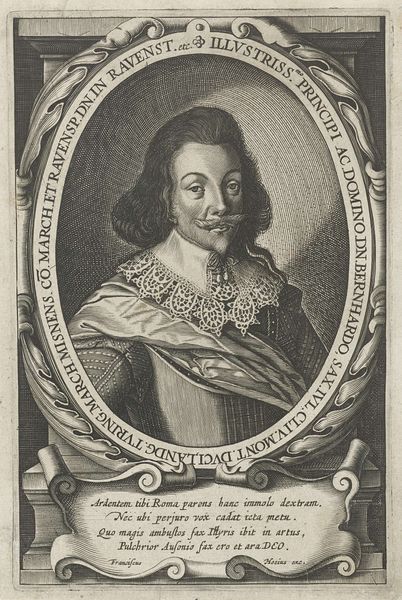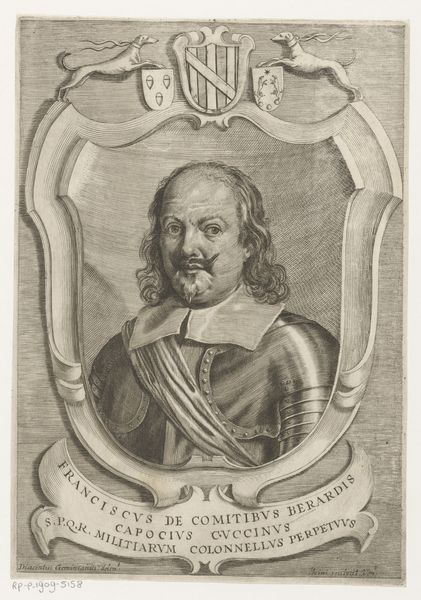
print, engraving
#
portrait
#
baroque
# print
#
old engraving style
#
caricature
#
line
#
portrait drawing
#
history-painting
#
engraving
Dimensions: height 131 mm, width 111 mm
Copyright: Rijks Museum: Open Domain
Curator: This is "Portrait of Paolo Ferretti," an engraving produced by Giacomo Piccini around 1642 to 1647. It's rendered in a tight, linear style characteristic of the period. What's your initial reaction? Editor: The subject's face reads as almost aggressively scrutinizing. His intense gaze and pursed lips—it makes me wonder what power dynamics were at play in commissioning and producing this piece. Curator: Interesting. The frame is elaborate. Note the inscription of his title, "Comes Paulus Ferrettus Anconitanus," indicating his status as Count Paolo Ferretti from Ancona. It adds another layer, highlighting social standing as a crucial aspect of identity in the Baroque period. Editor: Absolutely. Consider how the meticulous detail in the fur trim and lace collar serves as visual markers of wealth and privilege. The work isn't just a likeness, it's constructing and reinforcing a very specific image of Paolo Ferretti within a social hierarchy. Who was he? And how complicit was Piccini in creating a piece of propaganda, or a form of advertising? Curator: Biographical details on Ferretti himself are scant, making the symbolic weight carried by the engraving all the more pertinent. Piccini likely used established visual tropes associated with nobility and erudition. I notice the use of strong light and shadow contrasts—a dramatic element commonly deployed in Baroque portraiture. It can suggest nobility, wisdom, a powerful nature. Editor: The almost harsh lines in the engraving medium really amplify those light and shadow contrasts, adding to the intensity. It lacks the softness often found in painted portraits of the time, contributing to a slightly unflattering—even slightly grotesque—presentation. It raises questions of authenticity and representation; how much did the final result truly reflect the Count's desired image? Curator: It becomes a dance, doesn't it? The sitter, the artist, the societal expectations all intertwining to create an image carrying meaning that reverberates far beyond a simple depiction. Editor: And analyzing those reverberations reveals the complex social fabric in which this portrait was woven, inviting critical engagement with power structures, identity construction, and the politics of representation in early modern Europe.
Comments
No comments
Be the first to comment and join the conversation on the ultimate creative platform.
